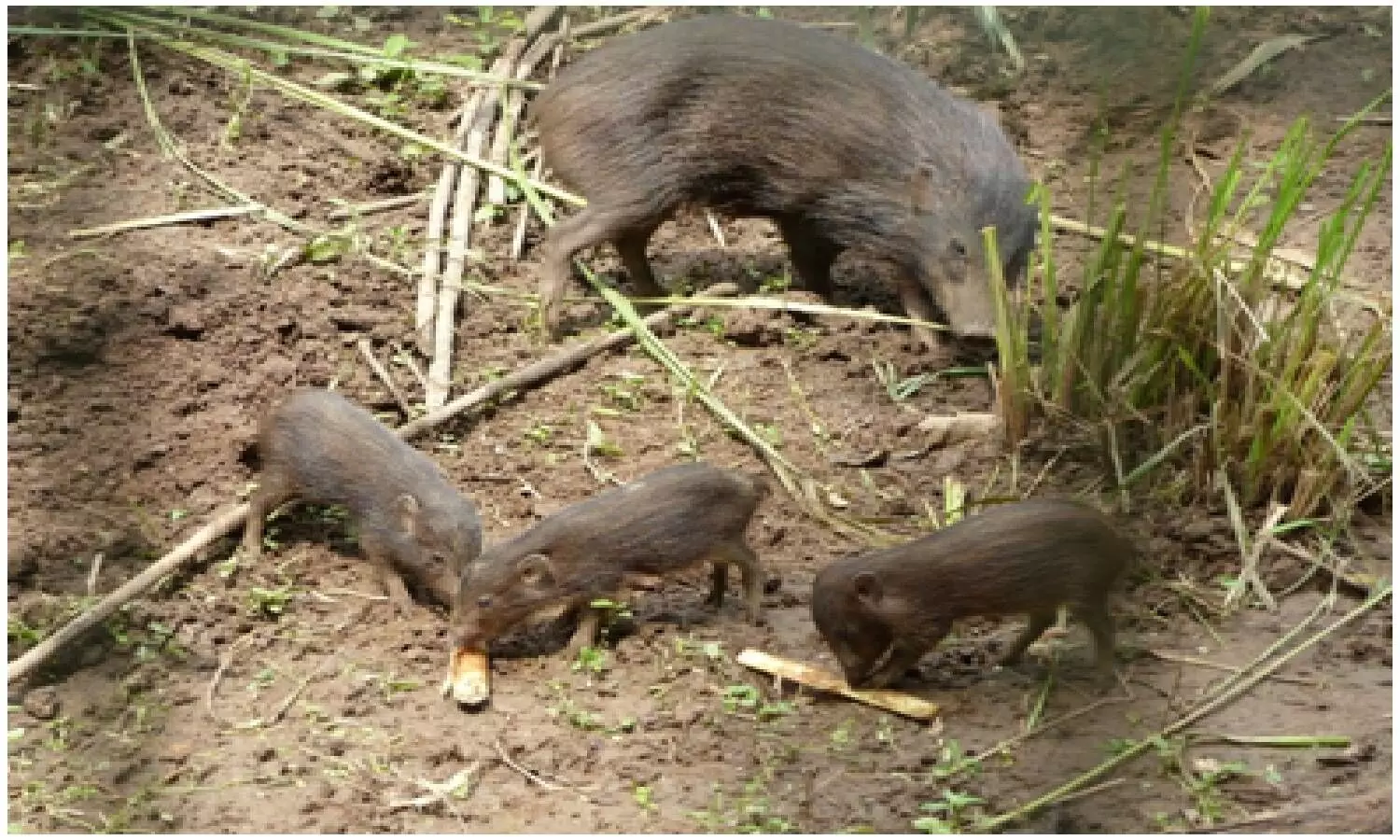Rare endangered pygmy hog genetic diversity remains maintained even after captive breeding
Pygmy hogs are one of the rare and endangered animals listed by the International Union for the Conservation of Nature (IUCN) and the Indian Wildlife Protection Act.
By Newsmeter Network
Hyderabad: According to a study by CSIR - Centre for Cellular Microbiology - a pygmy hog's genetic diversity remains maintained even after long-term captive breeding.
Pygmy hogs are one of the rare and endangered animals listed by the International Union for the Conservation of Nature (IUCN) and the Indian Wildlife Protection Act. The present population, including reintroduced animals, and is estimated to be less than 300 in wild. The original population, which has become restricted to a single locality, the Manas National Park in Assam, India, may have numbers lesser than 50.
The lead author of the study is Dr Deepanwita Purohit and the other authors include S. Manu, M.S. Ram, S. Sharma, and H.C. Patnaik from CCMB, and Parag J. Deka, and Goutam Narayan from Pygmy Hog Conservation Program.
Efforts to save this species from extinction include the protection of its only habitat and by breeding the animals in captivity. These are undertaken by the Pygmy Hog Conservation Program (PHCP), a collaborative project with the Durrell Wildlife Conservation Trust, IUCN/SSC Wild Pig Specialist Group, Forest Department, Government of Assam, the Ministry of Environment and Forests, Government of India, EcoSystems-India and Aaranyak as the key partners.
Since 1996, over 500 individuals have been bred successfully and 142 captive-born individuals have been released into the wild as part of the conservation program. However, all these captive individuals were offspring of seven wild individuals. One of the major challenges of the long-term captive breeding program is maintaining genetic diversity over several generations. The loss of genetic diversity could arise from inbreeding due to mating between related individuals within a population that was established with very few founders.
CSIR-CCMB-LaCONES (Laboratory for Conservation of Endangered Species) and Pygmy Hog Conservation Programme collaborated to examine the reproductive and genetic fitness of these captive-bred individuals. The research group headed by Dr G. Umapathy at CSIR-CCMB LaCONES studied genetic changes in 36 captive-bred pygmy hogs over time across eight consecutive generations. They also tested the association between genetic diversity and reproductive success to account for any fitness loss.
The study found no overall signs of genetic inbreeding between individuals across different generations. "This is possible due to strict scientific conservation breeding protocol by the program. They had carefully selected mating pairs that share the lowest kinship between them. But the recent generations show slightly increased relatedness. So, we recommend the introduction of a few wild individuals to the breeding pool," said Dr Umapathy.
"We carefully selected unrelated mates and bred them in separate family lines. We are glad that this study has provided evidence that it is possible to avoid genetic inbreeding in a small captive population even if the founder population is very small and if strict protocol is followed year after year," said Dr Goutam Narayan of PHCP and EcoSystems-India.
"This is the first such study on Indian animals to understand the genetic effect of long-term captive breeding of endangered animals. The outcomes of the study will guide the management and optimization of the breeding protocol in PHCP and other similar conservation breeding programs," said Dr Vinay K Nandicoori, Director, CCMB.